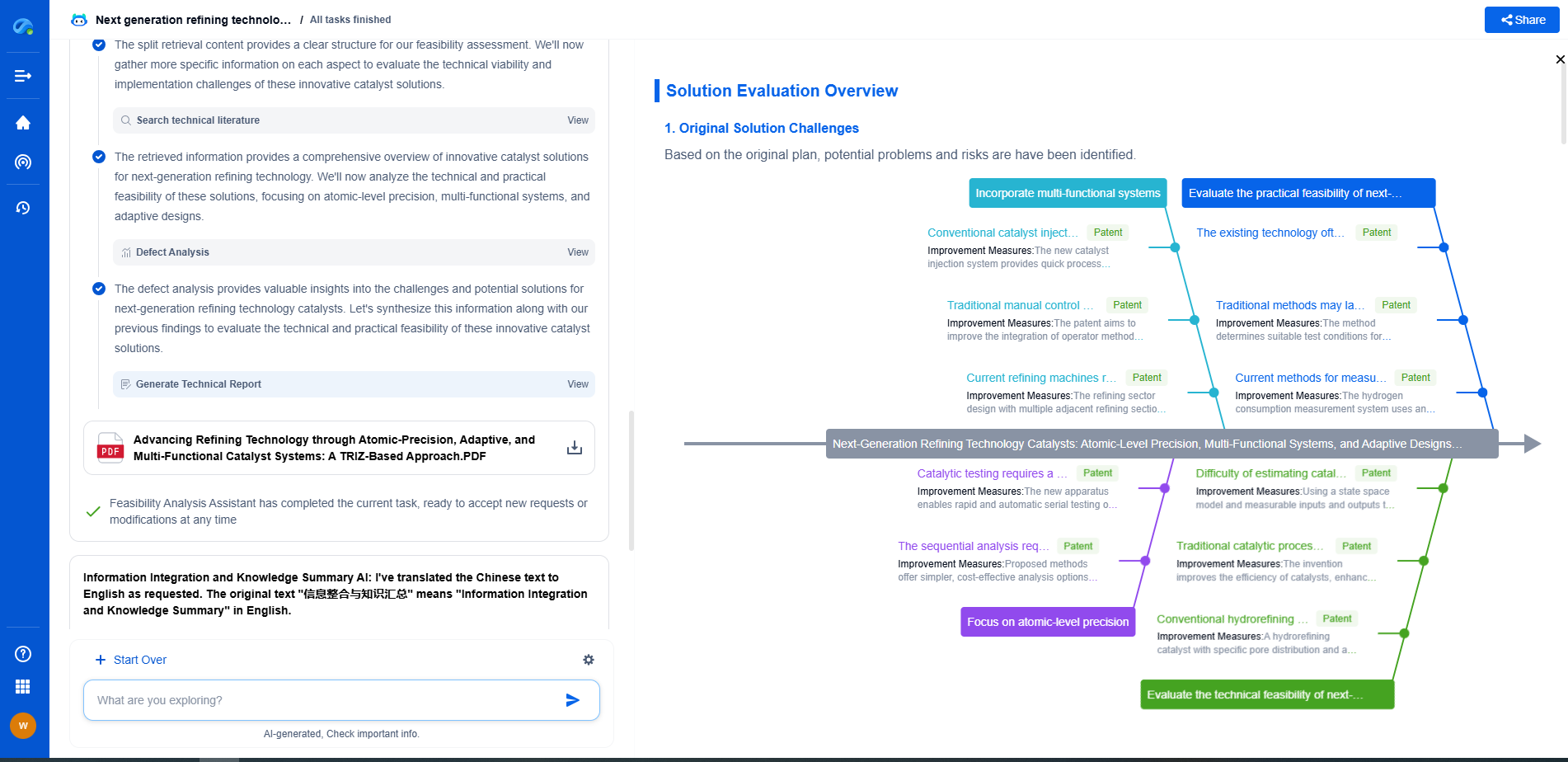Measuring crystal orientation and birefringence with polarized light microscopy
JUL 15, 2025 |
Polarized light microscopy (PLM) is a powerful analytical technique used extensively in materials science, geology, and biology to study the optical properties of anisotropic materials. By measuring crystal orientation and birefringence, PLM provides valuable insights into the structural characteristics of crystalline substances. This blog explores the principles of polarized light microscopy, the methodology for measuring crystal orientation and birefringence, and the significance of these measurements in various scientific fields.
Understanding Polarized Light Microscopy
Polarized light microscopy involves the use of polarized light to illuminate a sample and analyze the interaction of light with anisotropic materials. Anisotropic materials, such as crystals, have different optical properties along different axes. This anisotropy results in birefringence, a phenomenon where a material splits a light wave into two rays, each traveling at different velocities and refracted at different angles.
The Role of Birefringence in Crystal Analysis
Birefringence is a critical parameter in understanding the structural and compositional properties of crystalline materials. It is characterized by the difference in refractive indices between the ordinary and extraordinary rays. By measuring birefringence, scientists can determine the optical retardation and gain insights into the internal arrangement of molecules within a crystal.
Measuring Crystal Orientation
Crystal orientation is a key factor influencing the physical properties of materials. PLM enables the precise determination of crystal orientation by analyzing the interaction of polarized light with the sample. A polarizer and an analyzer are used to control the orientation of light waves passing through the sample. When polarized light interacts with a crystal, the orientation of the crystal relative to the light’s polarization direction affects the intensity and color of light transmitted through the analyzer. By rotating the specimen or the polarizer, scientists can determine the orientation of the crystal axes.
Techniques for Measuring Birefringence
1. **Compensators and Retardation Plates**: Compensators and retardation plates are used to quantify the birefringence of a sample. By introducing a known phase shift to the light wave, these devices allow researchers to calculate the optical path difference and determine the birefringence.
2. **Michel-Levy Birefringence Chart**: The Michel-Levy chart is a valuable tool for estimating the birefringence of mineral samples. By comparing observed interference colors with the chart, scientists can approximate the retardation and hence the birefringence of the sample.
3. **Image Analysis Software**: Advanced software tools are increasingly used to automate the measurement of birefringence. These programs analyze digital images captured under polarized light to provide quantitative data on birefringence and crystal orientation.
Applications of Polarized Light Microscopy
Polarized light microscopy has diverse applications across multiple scientific disciplines. In geology, PLM is used to identify minerals and assess their optical properties, aiding in understanding rock formation and composition. In materials science, it helps in analyzing the microstructure of polymers, ceramics, and other materials. In biology, PLM assists in studying the structural properties of biological tissues and cells, including collagen fibers and crystalline inclusions in plant cells.
Conclusion
Polarized light microscopy is an indispensable tool in the study of anisotropic materials, providing crucial insights into crystal orientation and birefringence. By leveraging the interaction of polarized light with crystalline substances, scientists can unlock detailed information about the internal structure and properties of materials. This knowledge has broad implications, from enhancing material design and manufacturing processes to advancing our understanding of geological and biological systems. As technology continues to evolve, the applications and capabilities of polarized light microscopy are likely to expand, offering even greater potential for scientific discovery.
From interferometers and spectroradiometers to laser displacement sensors and fiber optic probes, the field of optical measurement is evolving at light speed—driven by innovations in photonics, MEMS integration, and AI-enhanced signal processing.
With Patsnap Eureka, biomedical innovators can navigate cross-domain insights in optics, electronics, and biocompatible materials, while discovering IP trends across academic, clinical, and commercial datasets.
💡 Fuel your next breakthrough in optical health tech—start using Patsnap Eureka to unlock deep insights today.
- R&D
- Intellectual Property
- Life Sciences
- Materials
- Tech Scout
- Unparalleled Data Quality
- Higher Quality Content
- 60% Fewer Hallucinations
Browse by: Latest US Patents, China's latest patents, Technical Efficacy Thesaurus, Application Domain, Technology Topic, Popular Technical Reports.
© 2025 PatSnap. All rights reserved.Legal|Privacy policy|Modern Slavery Act Transparency Statement|Sitemap|About US| Contact US: help@patsnap.com

